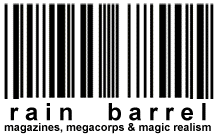
The extremely digestible
The 1999 RAIN BARREL
MagLog Archive
my fave = my
fave

The extremely digestible
The 1999 RAIN BARREL
MagLog Archive
my fave = my
fave
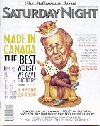 |
Saturday
Night : December 1999 / January
2000
It's another Millennial Issue that only concerns itself with the past century. What makes this issue of Saturday Night particularly interesting is that it features some of the neo-conservatives that used to grace the pages of Saturday Night exclusively until Paul Tough became editor. Rumours in The Globe and Mail suggest that Tough is under pressure from Conrad Black's wife to make the magazine a little less pink and a little more blue. Perhaps this is why Canada's legacy to the rest of the world is considered to be our mistakes in cultural policy, unrealistic health care, inaction as peacekeeping, and an untouchable Prime Minister. On a more positive note, Pico Iyer loves our literature and Dave Bindini enlightens that the comedic pie-throw came from Canada. This issue as looks into the future as prominent Canadians give their predictions, five science fiction writers script a scenario, and a jaundiced Daniel Richler reviews Burning Man caustically but in reflection ultimately applauds the event. |
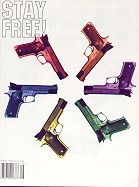 |
Stay
Free! : Fall/Winter 1999
Stay Free! is a wonderful zine that exists in the same neighbourhood as Adbusters but brings attention to consumer matters in a more literate way. The issue starts with pieces of marketing news that are alarming and subtlely justifies the magazine's existance. Then, there's a lengthy interview between two professors who study advertising that is meandering but has some highlights. And then comes some of the best parts in my opinion: a brief history on the marketing of diamonds by De Beers; a history of medical advertising (Listerine was marketed as a surgical antiseptic, dandruff cleaner, a sore throat treatment, guard against Asian flu, and a contraceptive, until it was decided to be a cure for bad breath). Other articles included the a personal argument against advertising on buses, how to prank for public gardens in New York, and the social psychology is mindlessness. And if you like Stay Free!, don't forget to subscribe. |
 |
THIS
Magazine: November/December 1999
THIS issue is wonderful. It's a special double issue on Utopias/Dystopias and is the best way I've seen the upcoming millennium commemorated in print. So many other magazines are either ignoring the event or providing cheesy historical timelines or best ofs. The ubiquitous Mark Kingwall writes about the death of utopia; Hal Niedzviecki (of broken pencil) writes of the promise of retirement as utopia; Douglas Rushkoff laments the death of rave's gift economy existence; Bruce Mau & Naomi Klein discuss shopping elysiums; Clive Thompson of shift writes why the future is the tool of capitalists; and there's lots more. There's also a wonderful map highlighting the historical attempts to set up utopias in Canada and a great poem called the Maple Leaf Elimination Dance - which is perfect for CanLit/Maple Leaf fans like myself. I like. |
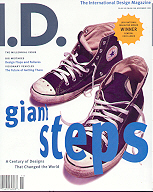 |
I.D.
: November 1999
Since most of us are almost constantly surrounded by man-made objects, most of use live in a world created by industrial and graphic designers. I.D. magazine is a means of looking into their world and to delight in what delights designers. For example, in this issue there is a entire page dedicated to the single-serving salt package. The cover announces that this is I.D.'s Millennial Issue but within the focus is purely on the best and worst designs of the century. Best unsung design ideas include the push button, the two-by-four, the pictogram, saran wrap and LSD. Some of the worst design ideas include the television, the gasket-sealed casket, and the shoe store fluoroscope. Also covered is the future of transportation and features boats in Indonesia made out of discarded water bottles. |
 |
BUST:
#13 Fall 1999
If you have never picked up BUST before, this issue may mislead you. You see, BUST is mega-zine (no one is paid for any creative work within) in which the bulk of the offerings are reader submissions on a given topic. Previous BUSTs have covered such topics money, girlfriends, and goddesses but with this issue they are on the holy stomping grounds of every other woman's magazine out there: the body. That being said, BUST isn't just any other woman's mag. For example, instead of articles on pleasing your man, BUST exhaults the virtues of pleasing yourself. And they aren't afraid of getting sausy. My largest complaint is that many articles followed the same arc: "I used to hate my (insert> fat, scars, stretchmarks, misshaped boobs, birthmark, big feet) but I learned to love it and now I am a goddess". My second complaint is that in this issue it seems that most of the women represented are jaded New Yorkers. Speaking of which, Janeane Garofalo is interviewed within. This wasn't my favourite BUST, but even at her weakest, BUST kicks Cosmo's skinny pale ass. |
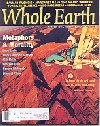 |
Whole
Earth : Fall 1999
In the beginning there was the Whole Earth Catalog. The catalog begat a journal to cover updates between catalogs called the Co-Evolution Quarterly. That journal evolved itself into The Whole Earth Review (and that magazine influenced my young mind in more ways than I can count). The Whole Earth Review was a strange creature; a strange combination of granola-crunchy items and cutting-edge high-tech. And so there was a crisis of sorts and the high-tech folk left to write for WIRED or become global business consultants or whatever and what remained is now Whole Earth. This issue is based on Metaphors: the mother metaphor of earth, the metaphor of virtual reality, cancer as metaphor, and the metaphor of nation as family. Other essays ponder beekeeping, home-made aircraft, biomineralization, and criminal insanity. This magazine may not be for everyone, but for the few, it may be exactly what you need. |
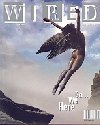 |
WIRED:
7.12 : December 1999
No, there's no Led Zeplin interview inside; it's a millennial cover. Too bad that the contents inside aren't as ambitious. The only item that is fin de siècle is a 'Dump File' in the back of the mag which includes Alexis de Toqueville, modern primitives, gravity, Courtney Love, and Rehab. It's weak. Among the ad copy are five articles: a profile on Clay Struve (risk manager for banks), a profile on Jim Allchin (vp of Microsoft responsible for Windows 2000), a profile on Oakley (it's not sunglasses; it's engineered sculpture <gag>), a profile on Sina.com (a Chinese AOL of sorts), and a profile on Internal Research (a R&D firm started by Paul Allen of Microsoft). Oh yeah, and there's a spread of all sorts of expensive high tech gifts for the CEO your Christmas list. It's hardly thrilling stuff. The best item of the issue is the photo of Jorn of Robot Wisdom weblog fame. Oh yeah, and there's an examination of 'cute' in Japanese culture. But it's just not enough. In my books WIRED has been downgraded from "market perform" (brokerese for 'Don't buy'). |
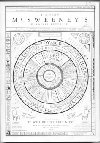 |
Timothy
McSweeneys: mid to late summer 1999
There's 288 pages of wordy joy in this third issue of the son of Might. Most of the items are fiction; whimsical stories that are never resolved but are still very enjoyable. There's also some great non-fiction works: "In the Kingdom of the Unabomber", "Spider Silk is a Neat Material the World Wants... can we make this in Goats?", and "The Eleven Dimensional Universe". The attention to graphical detail is divine. The letters section is hilarious. Now to read this all in one sitting might would be akin to eating too much butter, but in small doses, McSweeny's is a joy to hold and behold. |
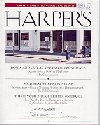 |
Harper's
Magazine: December 1999
Another millenium-free issue (isn't anyone commemorating the event?) The three page centerpiece of this issue is its brightest gem: "This is you Bill of Rights, on Drugs". The other articles, like the examination of the new 'humanitarian' face of the American military and the first-hand account of a New York flophouse are illuminating, but not stellar. Pico Iyer, author of one of my favourite travel books Video Night in Kathmandu, also contributes his observations of how some British (East) Indians have become disillusioned with England. And as always, the 'Readings' section has much to both delight and enrage. |
 |
shift:
December 1999
Nothing millennial in this issue - just business as usual for 'your guide to digital culture'. Actually, this is a stronger issue than usual for shift. The cover story is a great read: fan of videogames investigates claim that videogames train youth for killing by picking up a gun himself. And normally I just yawn as I read the many lists that shift loves to compose, but this time its different as the list of techsploitation films is actually funny and telling. And I learned something in its .earth column: combustion engines were originally powered by peanut oil and is now being used as such in veg-rich and diesel-poor regions of our world. And under music, there's a spotlight on the world of neo-caberet. Add a step by step guide to how to use your palm pilot to unlock your door or make free phone calls to make this issue particularly content rich. Ignore the CEO profile and the x-mas gift guide, and leave that sort of filler to the likes of WIRED. |
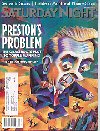 |
Saturday
Night: November 1999
Saturday Night magazine is, in a way, the print equivalent of 'This American Life', that is, of course if it was called 'This Canadian Life'. I say this because both programs examine national life on an individual level. Feature articles cover: the grassroots group thats trying to upsurp the leader of the Reform Party, illustrator Marcel Dzama, those who are investigating and reconstructing Swissair Flight 111, and, a Montreal phone scam operation. There's also a brief profile of Nardwuar, the Human Serviette. The weakest bit? Thumb wrestling with Mitsou (don't understand? don't worry) |
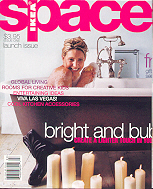 |
IKEA
space: issue one; launch issue
Another company is publishing a catalogue masking as a magazine, and that company is IKEA. Why this public service? Because: "IKEA believes that it is everyone's right to live with well-designed, affordable furniture...". Now, I believe all things should be well designed (being a Viridian), so that's fine by me. But, while IKEA is supposedly a proponent of the primacy of the home and of the affordable, the non-catalogue features of this magazine are focussed on uber-hip restaurants or which of the major world cities are best to live in. IKEAspace appears to want to be a poor-girls's Wallpaper. Oh yes, another item: IKEAspace profiles Las Vegas... just like I.D. It's a trend! IKEAspace: Swedish for lifestyle porn. |
 |
broken
pencil: Fall 1999: issue 11
broken pencil is billed as a guide to zine culture in Canada and the world. Well, forget about the rest of the world, but for Canadian zines, it is the definative source (at least, I know of no other venues). Unfortunatley, broken pencil reviews zines as opposed to describing zines (as now-defunct Factsheet5 did so well) and so the pages of reviewers making fun of some high school student's poetry makes for depressive reading. What people want is a resource linking zinesters to other zinesters. Evidence to this argument can be found in this issue's letters section in which a variety of folks are literally begging for an updated broken pencil website (note: now updated!). Supplementing this issue are excerpts from Canadian zines and features on Canadian B-movies. I won't recommend this, unless of course, you have a zine to flog. |
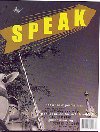 |
SPEAK:
fall 1999: 16
Quick! Name a pop-culture magazine that doesn't have a celebrity on the cover! Tough, isn't it? And so, it will be a tough go for Speak Magazine. Which is too bad because they cover some fertile ground: 'new' journalism and comics, teaching advertising ethics, corporate sponsorship at Disneyland, an analysis of 'cool' by Griel Marcus, interviews with artist Gillian Wearing and consumer advocate Ralph Nader, and the politics of ordering marijuana on the net. But while I found the subjects interesting, I didn't find the writing or the design within engaging at all. I was also put off by the magazine's tone of deadly seriousness. All in all, I do wish the magazine well - but if a periodical as fine as MIGHT can't survive in this cruel world, I fail to see how Speak will be able to survive sans celebs. |
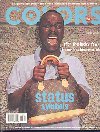 |
COLORS:
October-November 99; #34
The last issue of COLORS was weak but this issue on status symbols is more like the usual COLORS fare: amazing photographs of 'the rest of the world'. Notable photo and fact spreads cover such topics as sperm banks (the Fairfax Cryobank catalogs sperm by donor's discriminating tastes including their favourite car), jobs with status (teenage apprentices of sumo wrestlers may have to wipe their master's bum if he is too far to reach it himself), and vendors of blackmarket goods (see left), items of status (even those without electricity buy televisions or other appliances as status symbols), and exclusive clubs (In 1986, Isreal's secret service kidnapped Mordechai Vanunu from Rome, took him back to Israel and sentenced him for 18 years in prison. His crime? He photographed proof that Israel belongs to the 'Nuclear Club'. He has spent 12 years in solitary confinement.) |
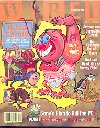 |
WIRED:
November 1999: 7.11
Whither WIRED? I can't make up my mind. I mean, in some ways WIRED has definitely become lamer as it tries to follow the money - hence the profile on Charles Schwab & Co. And yet, where else could you find articles on: how Sony is designing for the future, a visit to the Air Force stronghold Cheyenne Mountain (remember Wargames?), the toy design company Osterhout, a musican's attempt to finally correctly play a 1926 riot-inducing composition called Ballet mécanique, computers in Cambodia, teaching (other) computers to smell, why it isn't a good thing to be a visionary, and the work of a neuropsychologist from Laurentian University who investigates interactions between the mind and electromagnetic impulses. So I haven't successfully sworn off the magazine. Yet. |
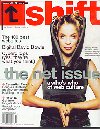 |
Shift:
November 1999
With this issue, Shift is now available in 24 countries. But what do countries matter if you are 'living in digital culture'? (hint: no Cancon) This Shift has a brief interview with David Bowie, a brief profile of the promoter of the Webby awards, a snapshot on drum and bassist Roni Size and a critique of Kevin Smith's new film Dogma. If this was the only fare in Shift, I would have placed the magazine alongside Yahoo!Life or sony style long ago. But luckily there is also a fine piece on the buggy state of software today, a piece on the commercialization of the net by Douglas Rushkoff that wasn't painful, and a review of the digirati of 99 that was really well done. Who cares about the 100 best websites - give me the 100 best ideas and I'll build my own. |
 |
Harper's
Magazine: November 1999
Harper's magazine can be boiled down to the following elements: the editor's essay, The Harper's Index, the Readings section (small essays, art, and excerpts of note), feature essays, and a work of fiction. The Harper's Index and the Readings section are almost always excellent and sometimes worth the price of the magazine alone. Feature essays are hit-and-miss though and in this issue, there is more miss than hit. 'In defense of the book' is not as much an argument but a lament and holds such quaint notions that it was a great library that attracted a great faculty to campus. The essay on Woodstock99 is better and eloquently describes the entire event as a slow-motion riot. But I think the strongest piece is that of the sugar lobby in Florida. Clinton was talking on the phone to a sugar baron during his infamous 'meeting' with Monica Lewinsky. There were two scandals going on in that room: too bad the American people focused on the wrong one. |
 |
I.D.
Sept/Oct 1999
I.D. is "The International Design Magazine" and should not be confused with I-D, which is a British fashion mag. You don't have to be a designer to be fond of I.D. I love the fact that under 'new & notable' they've listed an Italian designer chair and on the next page is an impressive mountain-bike inspired wheelchair. This issue is focused on the design of the objects of Las Vegas: its slot machines, casino carpets, 75-foot buffet tables, casino chips, neon signs, Las Vegas souvenirs, and Liberace, Elvis, and showgirl costumes. As well, Tom Vanderbilt of The Baffler examines the water politics of growing an oasis in a desert and there's a comparison of the Las Vegas homes of Penn Jilette (of Penn and Teller) with that of his fellow magicians Siegfried and Roy. This magazine is money. |
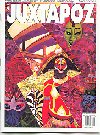 |
Art
Juxtapoz: Sept-Oct 1999; #22
Do you remember the guys in your art class - the ones that could really draw but spent all their energies recreating Metallica album covers and laughing at all the artistic pretension around them? Well, Art Juxtapoz is their art magazine. Hell, Juxtapoz is a magazine for anyone who is thrilled by a striking image - whether on album cover, comic book, zippo lighter, human skin, or canvas. Featured artists include Brian Clarke (pop culture maven), Greg Jezewski (baseball and monsters), Timothy Cummings (unsavory beauty), Alan Forbes (found objects + paint), Jorge Santos (Magritte + pain), Kent Bash (icons offset) and Moira Hahn (angry Japanese animals). There is also a short bit on the Museum of Jurassic Technology which was disappointing (read this instead). How many other art magazines do you know have advertising from indi record labels? This art is punk rock. |
 |
Outpost:
Fall 1999
This is the magazine for the those with itchy feet and itchy minds. It's well produced but not slick, well written but not pretentious and most importantly, Outpost's focus is on the traveler, not the gear. Feature articles include travels on the Chao Phraya River in Thailand, travels with seven young landscape painters in Newfoundland, and Mexico's Sierra Madre - where the indigenous peoples are encroached by both tourists and drug cartels. As well, there's a photo essay of the Turkana people of Kenya, advice on treating drinking water, personal travel stories and travel-related music, film and books. |
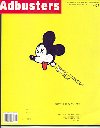 |
Adbusters:
Autumn 1999
This issue from "the Journal of the Mental Environment" takes graphic designers to task for creating a world that only reflects its corporate masters. To remind the profession that they were not always apolitical, Adbusters and six other magazines have revamped and reprinted 'First Things First' - a graphic design manifesto first created in 1964. Keeping in this vein, most of the issue is dedicated to examples of graphical agitation when artists have got their chocolate design mixed in with their political peanut butter. With each issue, Adbusters gets slicker, reads tighter, and becomes brasher: there's a thrown gauntlet at Mr. Conrad Black, a large article about a summer camp for monkey-wrenching activists sponsored by The Ruckus Society, and an invitation from editor Kalle Lasn to create anarchy by design. And folks, he's serious. |
 |
UTNE
Reader: Sept-Oct 1999
So I bought the latest UTNE (rhymes with 'chutney') Reader, read it, and divided its contents into two groups: cheesy and non-cheesy. The cheesy includes Susan Bright's ideas on sex and creativity, a writer who refers to mixed-race kids as 'edgewalkers', a mother's home-made rite of passage for her son, and a piece by a writer who believed that she could build her new home without any environmental damage. But there was good stuff too: writers who refer to mixed-race kids as 'fitties' (50% this, 50% that) and as doubles (twice the cultures - there is no race) and articles about TV content lobbying, third world suicides of women, life in the atmosphere, McMansion mania, radon as remedy, and holocaust humour. Ah, if UTNE could only replace its cheesiness with some soy-based articles! |
 |
Saturday
Night: October 1999
Saturday Night is dedicated to all things Canadian - and because of this, we have a magazine that profiles not only Louise Arbour (UN prosecutor of crimes against humanity) but Diana Krall (well-grounded jazz singer) and Sarah Polley (reluctant Hollywood 'breakout star'). All, incidentally, are quite tight-lipped. The real surprises are unearthed in the articles about how British Columbia's provincial government was toppled by motions begun in a poker club, why the favourite guru of a Rexdale Sikh community is no longer allowed to teach at the temple, and how, through both deals and lawsuits, a Canadian company has acquired the premiere software platform for file piracy - Hotline. To read this magazine is to look at the world through maple-coloured glasses. |
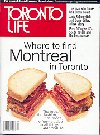 |
Toronto
Life: October 1999
No, Toronto Life is not an oxymoron even though the cover story does illustrate Torontonian insecurties of not being Monteal. Toronto can never be Monreal... there's no Schwartz's for one. Schwartz's specialty is smoked meat which is pickled for three weeks, roasted for 10 hours, and steamed for 2 hours in prepartation for your sandwich. Other stories, like the profile of Shift Magazine, the IKEA snapshot, the man who guards the name Glenn Gould, and the story on the man who created the Giller prize (for Canadian Literature) are good reading even if you are far away from Toronto, like, say, Windsor. |
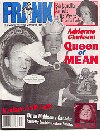 |
Frank
Magazine: October 6, 1999
In Britain, they have the magazine Private Eye to keep the powers that be in check. In Canada, we have Frank. The equivalent in the libel-loving US could not possibly exist. That being said, Frank is barely surviving its libel suits here. But that doesn't stop it from publishing some of the most damming and unflattering stories on our beloved politicians, captains of industry, and journalists. In this issue, Frank has a field day with our new Governor General, Adrienne Clarkson. You have to read a handful of issues to understand some of the necessary doublespeak. I'd reprint some of the more interesting facts I've learned, but I can't afford a lawyer. Frank. It's crude, it's rude, it's unsubstanciated, and we'd be a poorer country without it. |
 |
Harper's
Magazine: October 1999
I always get slow and melancholy during the fall and yet, autumn is my favourite season of all. Reading a 16 page folio on apple picking in Washington's orchards by David Gutterson, author of Snow Falling on Cedars, fit my autumn mood perfectly. For brisker reading, there is an article that makes the argument that the only way gun control can exist in the United States is if the American constitution is changed. Another great read is a complaint that critics failed to see the art in Kubrick's Eyes Wide Shut. |
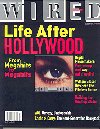 |
WIRED:
7.10: October 1999
WIRED has really lost its edge. First, the cover is really poor, being both jaring and uninspiring (note to WIRED: "Think panorama"). Second, they make fun of Apple's ad campaign - of two years ago ("Think future"). And then they spend 15 pages on backpacks... sorry, 'next-generation gear' ("Think again"). The issue seems larger because of all the ad copy but in fact, there's not much meat on the bone. There's a company profile on the not-exactly unknown AOL (NEWSFLASH! You can be successful without being sexy!) and a discussion on the economics of Japan. The set of three articles on digital filmaking is good and includes a piece by William Gibson. Only the article on ocean shipping really highlights what unexplored territory WIRED can cover. Or used to cover. We'll see. |
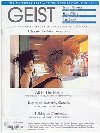 |
Geist:
Number 33
You may have noticed, I hold a preference for non-fiction. Please keep this in mind as I heap high praise on Geist. I picked it up because of its clear and beautiful design that doesn't bring attention to itself. And now that I have written that sentence, I wish to apply that sentiment to the writing within as well. It has Harper's-like text-boxes of peculiar fact or excerpt. It has the National Beer Map of Canada. It has first hand accounts of Butterfly Garden in Sri Lanka and a holiday in Cambodia. It has short pieces of poetry and fiction that have made me reconsider my aversion to all thing literary. This is the magazine dedicated to the 'imagined country' of Canada. |
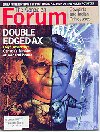 |
The
Canadian Forum: September 1999
It's more like The Canadian Boredom. Sure, some of the subjects covered are interesting, like the history of sterotying Native women, the 'Big Strike of 1909', and the legislation of bread in Regina. Okay, the subjects are not particularly interesing at all. They could have been if they were written with grace or flair but they were not. The clincher is the cover story on Lloyd Axworthy - Canada's Minister of Foreign Affairs. Who really wants to know more about the man? What I want to know is how does this magazine survive? |
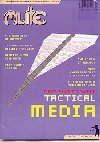 |
mute:critical/information/services/13
mute is a true computer culture magazine and unlike Shift, which had a literary beginning, it is grounded in the visual arts. It's from England, so the many of the shorter pieces about gallery works may not be of much use, but luckily mute's interests are largely out of gallery spaces. Feature articles include a description of the efforts to keep B92, a source of independent news in Belgrade, on the air through the internet, the Next 5 Minutes conference in Amsterdam, dealing with eco-data, a cyberfeminist group called the Old Boys Network, and a profile on artist Vuk Cosic. Writing about the visual arts is difficult and mute isn't always up to task - many articles sound possitively cryptic. And like Shift, the magazine is well designed and the fashion section is horrible. |
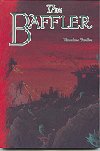 |
Baffler:
Number 12
128 pages in this 'Journal That Blunts the Cutting Edge'. This issue covers Blood, Sweat, and Tailfins. Under Blood: critiquing the Cult-Studs (Cultural Studies), the McOndo literature movement, and a very dense "Triumph of the Global Vulgate". Under Sweat: the Irish Pub chain that's coming to your town, the sweatshop exhibition that came to the Smithsonian, and a riveting piece that details the injustice that goes down in a California city whose only industry is prison. Under Tailfins: articles on the Cadillac, a Volvo Press Junket, and whether Saturn really is a different type of car company. What I learned: We need a revolution. Bad. |
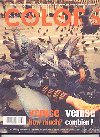 |
COLORS:
August-September1999
After previously tackling such topics as death, marriage, and race, this issue of COLORS is sharply focused on the city of Venice. The photography inside isn't as spectacular as previous issues but there is some real insight on the idea of tourism. What I learned: Pickpockets in Venice can earn up to $33,000 (US) per month. Venice has no sewers and consequently the canals create a healthy stench. There are 411 bridges in Venice and four McDonald's in the city core. I am never going to Venice. |
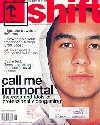 |
Shift:
September 1999
This issue's theme is videogaming but there is some non-gaming material such as cloud-seeding, solar guerrillas, and hell.com (it *is* possible to get into hell without an invite). For gamers there's an article about the Professional Gamers League and the 2nd-Annual Videogame Guide - which, I suspect, is less done as a public service, but more so as a way to get some expensive games for free. This issue is mostly candy - tasty but you couldn't live on it. |
 |
Bruce
Lee: September 1999
"The Official Publication and Voice of the Jun Fan Jeet Kune Do Nucleus". Well, I'd rather be on the other end of "progressive indirect attack" than finish reading this magazine. The folks that make up the JFJKD Nucleus seem keen to promote a Bruce Lee religion. In this issue there's Bruce Lee's Philosophy IV (Epistemology), nutritional guidelines (Fueling the Dragon), Ask Bruce Lee (don't ask), The Brandon Lee memorial Column, Bruce Lee Educational Foundation (Formed!) the Bruce Lee Essay Contest, and my fave, Jun Fan Jeet Kune Comes to Idaho! I think it impossible to write about any martial art and not sound dorky, no matter how sincere you are. That's why Bruce Lee made movies. |
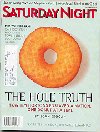 |
Saturday
Night: September 1999
Well, this jumped the queue at the end table because I love it so. SatNight is the unabashed king of cancon. Articles include: an ode to the cougar boot, a profile on W.P. Kinsella, a Canadian action figure party, how Roots is trying to turn a fish and lumber town into an eco-tourist trap, and a piece from poet Susan Musgrave on her visit to her husband, Stephen Reid who is renowned as both an author and a bank robber. The only essentially non-cancon article is about the World Wrestling Federation as the author tries to look at it through his 15 year old son's eyes. The cover story on Tim Hortons is disappointing, tho, as it simply a collection of facts strung together with scenes from Tim's across Canada. It had promised to answer 'what does it say about us that our only truly national institution is a donut shop?' |
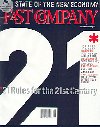 |
Fast
Company September 1999
If the new economy is the new rock and roll, the FastCo is battling it out with WIRED to be Rolling Stone. And if I was in business, I'd pick FastCo: its more pragmatic, cleaner in design, has great illustrations, and has more women profiled in this issue than all the WIRED issues I have ever read. In this issue: ideas from 21 'thought leaders'; companies profiles on K2 (rec equipment), LandLease (architecture), Context Integration (knowledge management), the US Special Forces Command; and personal profiles on Richard Bolles, author of What Color Is Your Parachute, and Anita Borg who created an organization called Systers to encourage women to create technology. Like WIRED, mind you, the new economy is treated like a new religion and the enthusiasm can be nauseating. I can't wait for Baffler to sink their forceps into them. |
 |
National
Geographic: September 1999
When I was growing up, NatGeo was seen but never read. But I finally toughed out my first read. I learned about Kashmir, olive oil, the preservation of art in the Sahara, the male initiation ceremony of the Masai in Kenya, Mongolian eagle hunters, rodeos, the Galileo mission, and the first 'round the world balloon trip. The subjects I was most interested about - the Masai and the Mongolians - were only treated to a photo essay treatment. Just as well, as the written pieces seemed like they came out of a textbook. Dry. You never learn anything about the author, nothing disparaging about the subject is ever said, and the emphasis is on facts, not on opinion. Mind you, my boyfriend who is a long-standing NatGeo fan and subscriber, says that this is a weak issue and, besides, its writing manner is probably just not my style. |
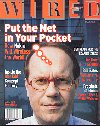 |
WIRED:
7.09: September 1999
John Brockman, a literary agent wants to make his workplace a paper-free one. So why is this in WIRED? Because John is a "onetime hippie, Warhol groupie, feminine hygiene marketing guru, 'intermedia' performance artist, author, and now salon leader... " which makes him a WIRED pinup boy. There are also company profiles of UPS and Noika - the Finnish wireless company, and 'concept factory' idealab! But the 'Prophets of the Boom' section is almost unreadable. I gagged on statements like "The good news is, you'll be a millionaire soon. The bad news is, so will everybody else". Really. |
 |
Harper's:
September 1999
There's definitely a bent towards all things literary in this issue. The feature piece is five poets talking about their favourite poems - that should only be read by poets. I found the essays: "Why Johnny Can't Fail", "I Know Why the Caged Bird Cannot Read", "Great Books for Dummies" and "The Future of English", more telling. There's also an excerpt from Lynda Barry's Cruddy, which seems to cover the exact same territory as Barry's older works but advance reviews say that the novel eventually travels darker waters. Also, a piece on the world of Matthew Sheppard's killers. |
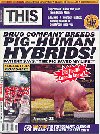 |
THIS
Magazine: July/August 1999
Some well-written articles in THIS issue that covers what's Left in Canada: the troubles of the Reclaim the Street movement, a personal reflection on being Serbian, animal donor-givers, censored comic strips, and one researcher's account of having her work on the 'growing gap' in Edmonton dismissed because she wasn't Albertan. What I Learned: more police are billing protesters for their services and now freedom of assembly can cost $18,000. |
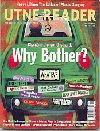 |
UTNE
Reader: August 1999
I only buy UTNE once in a while because I find their tone too 'inspirational' if that makes any sense. Anyway, I got this issue as a gift. Some space is given to the difficulties of 'living with conviction', cricket in Compton, one woman's face lift, and a reprint of an article from Shift on being a new-media wage slave. But I found the article on health and poo the most interesting. Does that make me a bad person? |
|